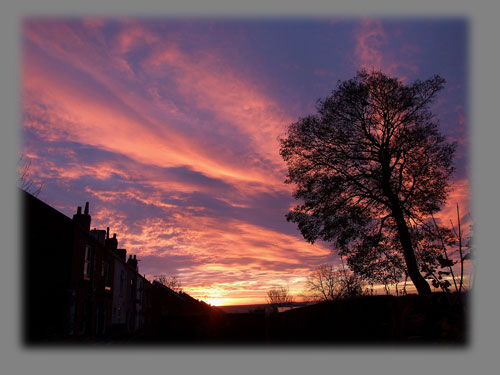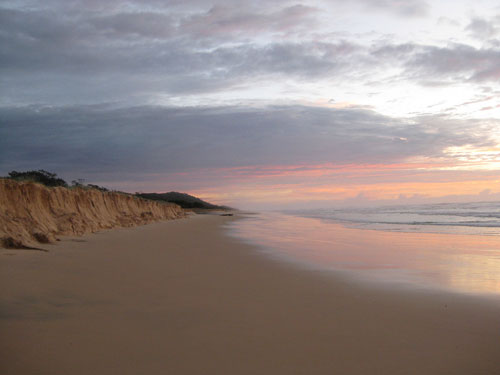Here we have somewhat of a cautionary tale for all of those in the field, to help guide us away from those behavioral models that we should all avoid. Well, that we should avoid if we do not wish to have the often negative connotations that are associated with these types of designers impacting our reputation as a member of the industry. Which might prove very difficult to shake off and recover from in the eyes of other members of the community.
Most of us have had, or have been, that friend warnings were issued about. The bad influence whose behaviors the older generation were so afraid others would begin to emulate, and then it would all be downhill from there. Well they are back! And here come the warnings to prevent as many of us in the design community as possible from following in their damaging footsteps. So take a look below at the breakdowns of those types of designers you should strive to not be, and see if you fit into any of the categories.
The Browse and Biter
First up we come to the nefarious Browse and Biter. This designer-type is characterized by their tendency to browse the web for ‘inspiration’, and they end up biting, borrowing, or simply flat out stealing the styles or designs that they see there. No matter how pure their intentions may be, this type of designer never learned the difference between being inspired by and, well, copying another’s work. Taking a look through their portfolios, one sees a lot of familiar looking or feeling works that they know they have seen somewhere before.
They see a design they like, and they just have to copy it. Image Credit
Tips to Avoid Being a Browse and Biter
These unfortunately unoriginal folks have a way of upsetting the understood natural order of things with their browse and bite ways, so it is best to learn where those lines are, and stay on the right side of them. Know where inspiration ends and your own voice and work begins. Know the difference between an homage and an ‘Oh, my god they ripped me off!’. Understand that if you admire someone and their work, the right way to honor them in your design is to use the way their work makes you feel and voice that through your work. Not duplicate what they have done. That tends to not be looked on as an honor. So be original, not a browse and biter.
The Stag
Next up, we have the Stag. This type of designer is mostly known for having a really specific style that never really grows or evolves. They just get to a point where they become satisfied with where they have gotten to, and they just stay there. Being stagnant. Soon all of their designs begin to feel stale, as no new ground is really ever broken in their work. And each ‘new’ piece that they craft feels very close to the last piece they just finished before it. And the one before that. And so on, ad nauseam. With this designer-type good becomes the enemy of great. They become satisfied with good and they never strive to be better. To be great.
Tips to Avoid Being a Stag
Now this is not to say that as a designer we should never be happy with the levels to which we have progressed. It is simply saying that we should always strive to be keep progressing. Growth is not a journey’s end, it is a never ending journey. A quest to always be learning more and evolving our skills. Nurturing them so they can rise to the next level and us along with them. And when we finish a design and begin a new one, we should always try to begin anew, as it were. To start fresh, and give each design a chance to be unique and not just a variation of our last piece.
The Boxer
Another designer-type to avoid becoming is the Boxer. These designers tend to be completely boxed in by the field, and for some unknown reason can not allow themselves to ever think outside the proverbial box. These incessant rule abiders become so caught up in the rules and principles of design that they never dare to break outside of or think beyond any of them. While Boxers may exhibit a technical proficiency, and their galleries may be full of precise, sharp designs, the work itself will have no heart. No daring. And as most of us in the field can attest, usually the pieces that have a lasting impact, tend to be those with heart.
For the boxer, everything makes sense in the ‘ring’, and they can’t bring themselves to step outside of it. Image Credit
Tips to Avoid Being a Boxer
While it is easy to see how a designer can become so enveloped in the basics and those standard design practices that they forget about actually ever trying to push any envelopes through their work, it can be overcome. Design is a dynamic and versatile field that is built on those rules, but they are meant to be more of a guide for us than an absolute. As long as we have an understanding of them, then we can try pushing beyond them every now and again to find our way to true innovation in our designs. Think of the box as our arrival packaging into the design world. Now that we are here, we are not going to stay in our original packaging. We are going to unpack the box and use those things inside the way we best see fit.
The Safe-Player
Not moving on very much, we come to the next designer-type you want to avoid becoming, and that is the Safe-Player. This is actually somewhat of a variation on the Boxer. These designers do want to push the envelopes, and take huge design leaps of faith, but alas, they are too scared, and as a result they reel it in and always end up playing it safe. When you look through their work, you get that comfortable safe feeling exuding from all of it. None of the designs feel like they dared into any new or unfamiliar territory. This often stems from the designers desire to not make any mistakes, so they opt for the safer route. Forgetting all the while, that we need to be making mistakes so we can learn and grow.
Tips to Avoid Being a Safe-Player
For the most part, the advice here follows in suit with the tips for avoiding the Boxer model. However, we should stress that if you want to cast off these Safe-Player shackles, then you really need to be comfortable taking risks in your designs. You cannot let fear of mistakes or failure keep you from trying something new. Not if you want to stand out from the masses.
The Offended Defender
Now we move into the next warning section, that of the Offended Defender. These designers are usually characterized by their offended defenses of their work against any criticisms. Even those that are intended to help the designer make improvements. And they may actually be a good designer by and large, but the fact of the matter is, that they could be great if only they knew how to take and use these critiques of their work. As you look through their gallery, you wonder why some of the works seem like they could benefit from some slight tweaking. You might even go so far as to send them a polite note suggesting one such tweak. That is when you learn why those designs are and will forever stay that way.
It does no good getting all offended and in someone’s face because they tried to help. Image Credit
Tips to Avoid Being an Offended Defender
The main thing that one can do to step out of this less than favorable light, is to learn how to take criticism without imploding or defensively clinging to the critiqued element and allowing the work to suffer due to some over-inflated sense of ego or pride. And that is unfortunately the way that some designers take it. Even in the harshest of critiques we can often find some useful tips or hints to take away. We just might have to dig down to find it. We also can not let someone else’s negative tone let us get defensive and tune out to what useful tidbits might be buried underneath it.
The Apt-less Pupil
Now we come to the Apt-less Pupil designer-type. Now here it is not that these designers are so much slow learners that makes them less than desirable to become, it is just that they never quite get there, but think that they have it. There is nothing wrong with being a slow learner, but clients and colleagues working with you on a project should not have to suffer through your learning curve. These designer-types also can reflect poorly on the industry overall, as they introduce a segment of the market who call themselves designers, and hire themselves out as designers, but they are not quite designers.
Tips to Avoid Being an Apt-less Pupil
Basically, learn the field before stepping onto it to play in a game. Plain and simple. Also, do not take a job that you are not yet fully qualified to be taking, and you will steer yourself clear of this label easily.
The Underwhelmer
Now we come to the next designer-type, the Underwhelmer. These not-so over-achievers are mostly recognized by their tendencies to effectively under-deliver for their clients. In fact, they even tend to talk a really good game, which makes them hard to recognize to most. But even though they themselves have set the bar of expectations they rarely, if ever, live up to their own hype. Where most designers will tell you that the secret to success is to always over-deliver for your clients, this flock tend to fall short of that mission statement.
We want to make the best of impressions all the way through the project, not completely drop the ball by under delivering on their expectations. Image Credit
Tips to Avoid Being an Underwhelmer
To keep from baring this brand, again you have to know your limits and not let yourself get in over your head. Whether it is by committing to a project that you do not have the design background or know-how to come through on. Or whether it is by taking on too many clients or projects so that you end up coming up short on one or more of them when the deadlines roll around. Make sure that you can stay ahead of your workload, and have enough skill to deliver on all of your promises, and you might be able to keep from falling into this category.
The Space Cowboy or Cowgirl
Moving on, we come to the Space Cowboy or Cowgirl types of designers. Sufficed to say, their heads are far beyond just being in the clouds, they have left our general atmosphere and are floating in space. These designers are typically characterized as promisers of the moon, without any consideration given to the coding that will have to breathe life into their designs. Also known as the Coder’s Nightmare. Most designers for the web understand that some level of coding background is necessary so they can proceed somewhat reasonably. The Space Cowboy or Cowgirl makes no such concession.
Tips to Avoid Being a Space Cowboy or Cowgirl
Basically, to keep from wearing this dreaded label you need to be informed. Come down from those heights and plant your feet on the ground for a spell. Walk a mile in a Coder’s shoes. Then give them their shoes back and work together to make the most of the design project. Be reasonable in your expectations from the coders, just as you would expect from your them, or as you would expect from your clients.
That’s All Folks
That pretty much wraps up the discussion. Well, from this end anyway, but things are far from over. Now it is up to you to take over and let us know your thoughts on the subject at hand. And remember, for any of those finding themselves fitting into one of these roles, acceptance is the first step on the road to recovery. What designer-types would you warn your kids not to grow up to become? Are there any additional tips you would offer any sufferers of these behaviors that were left out?
(rb)



























































































































